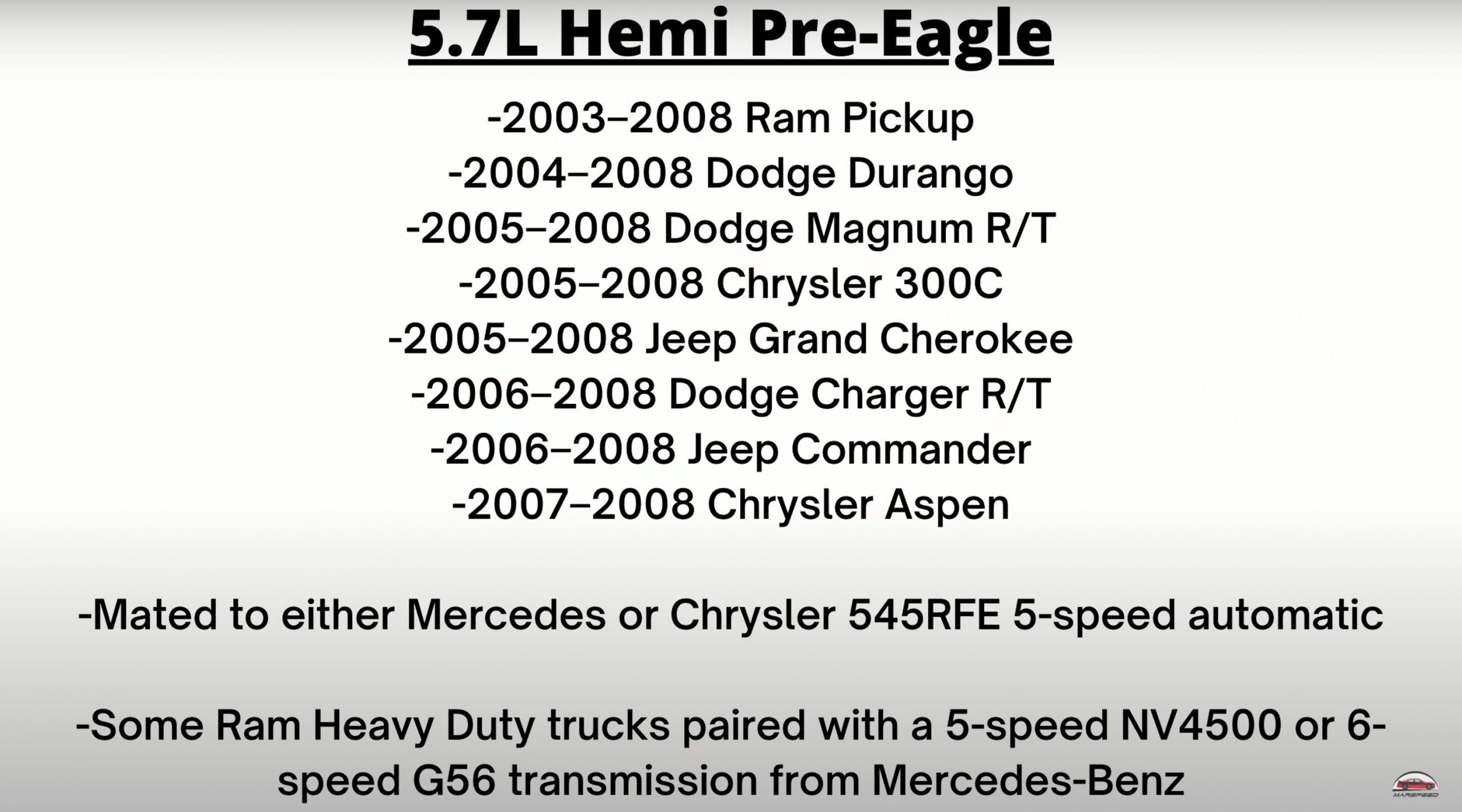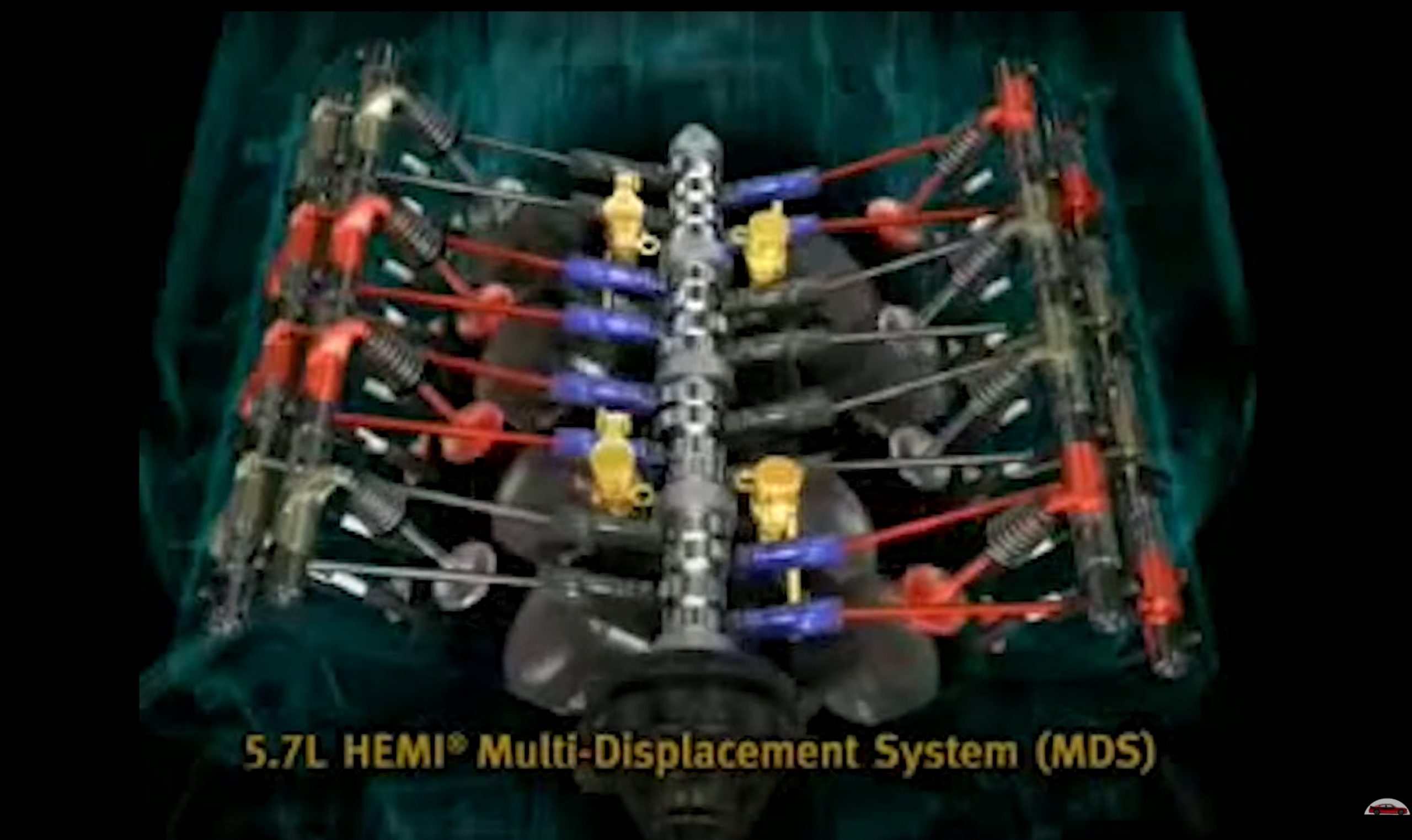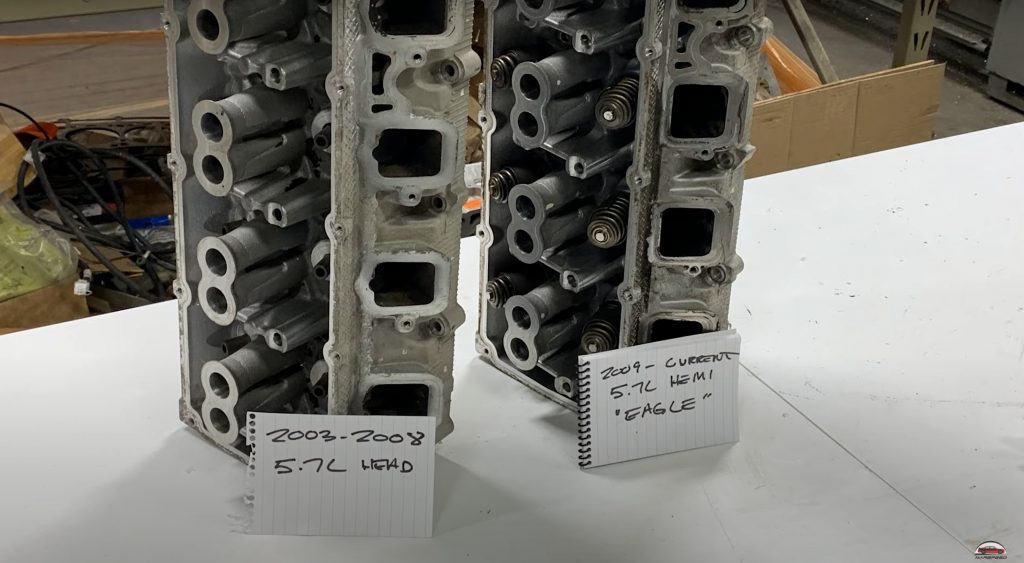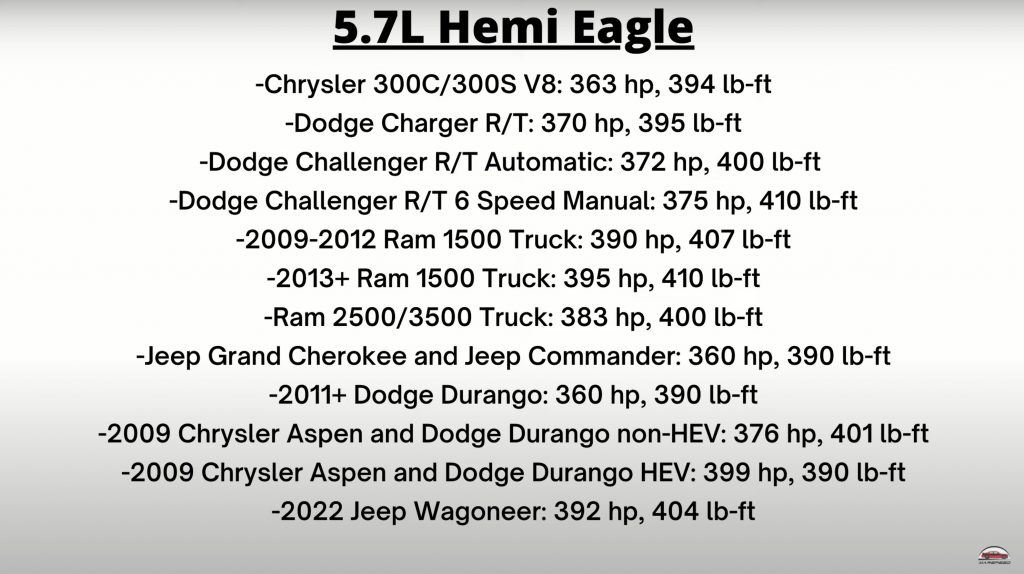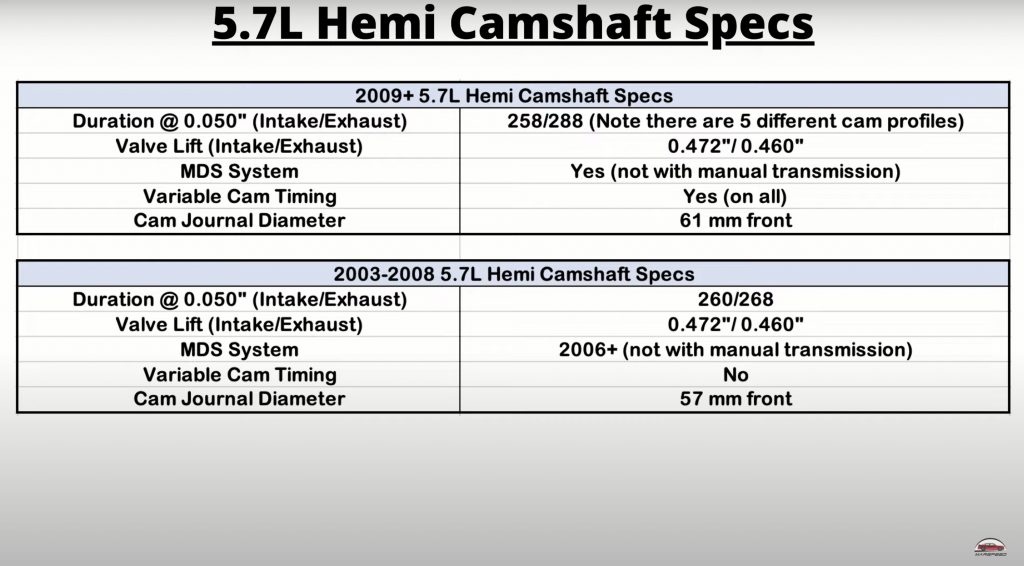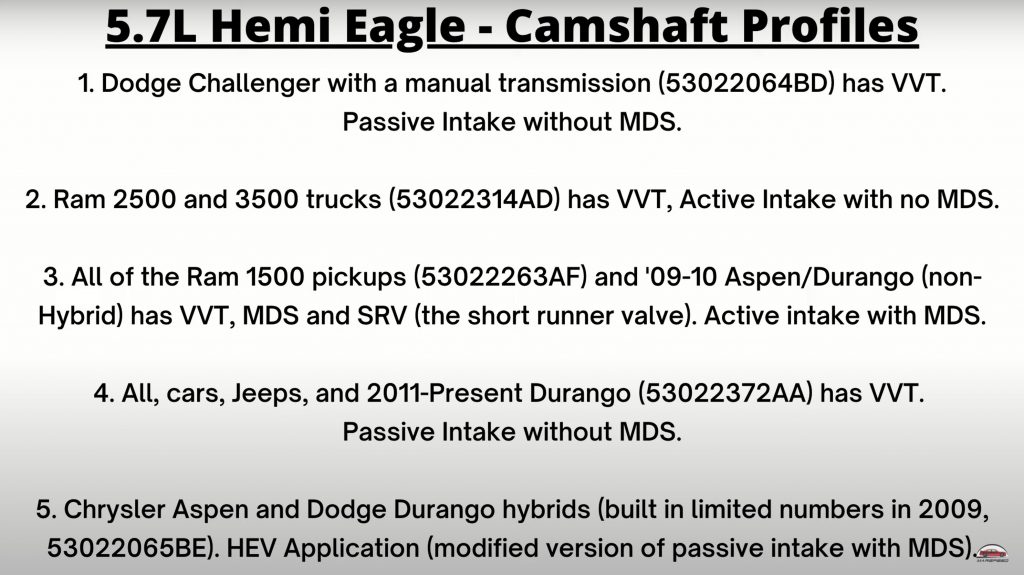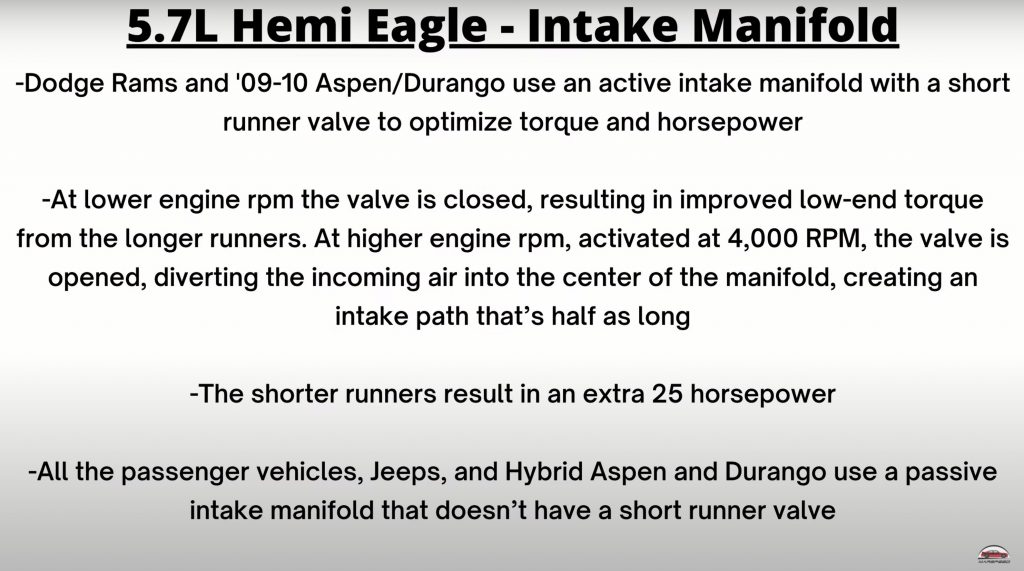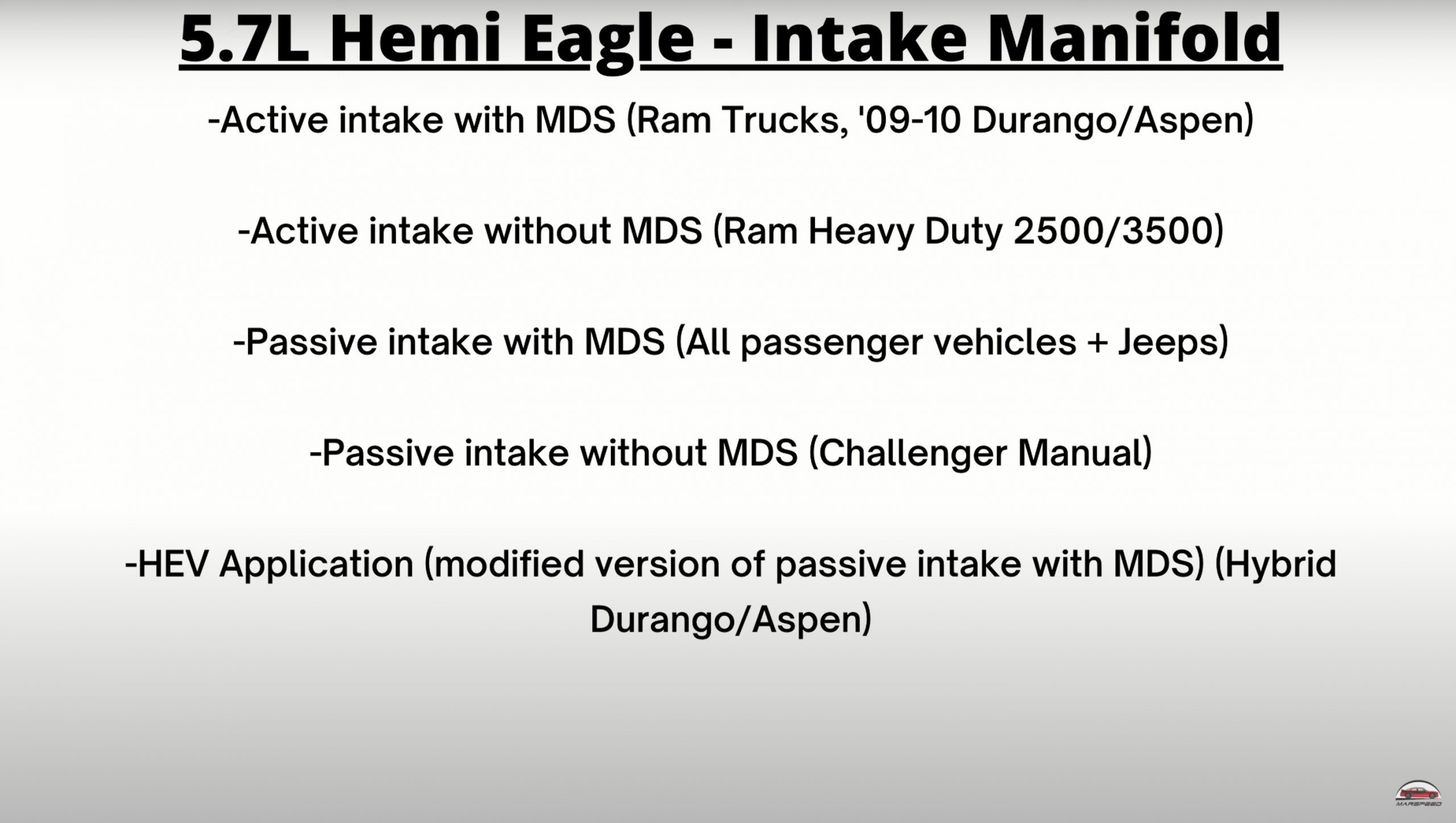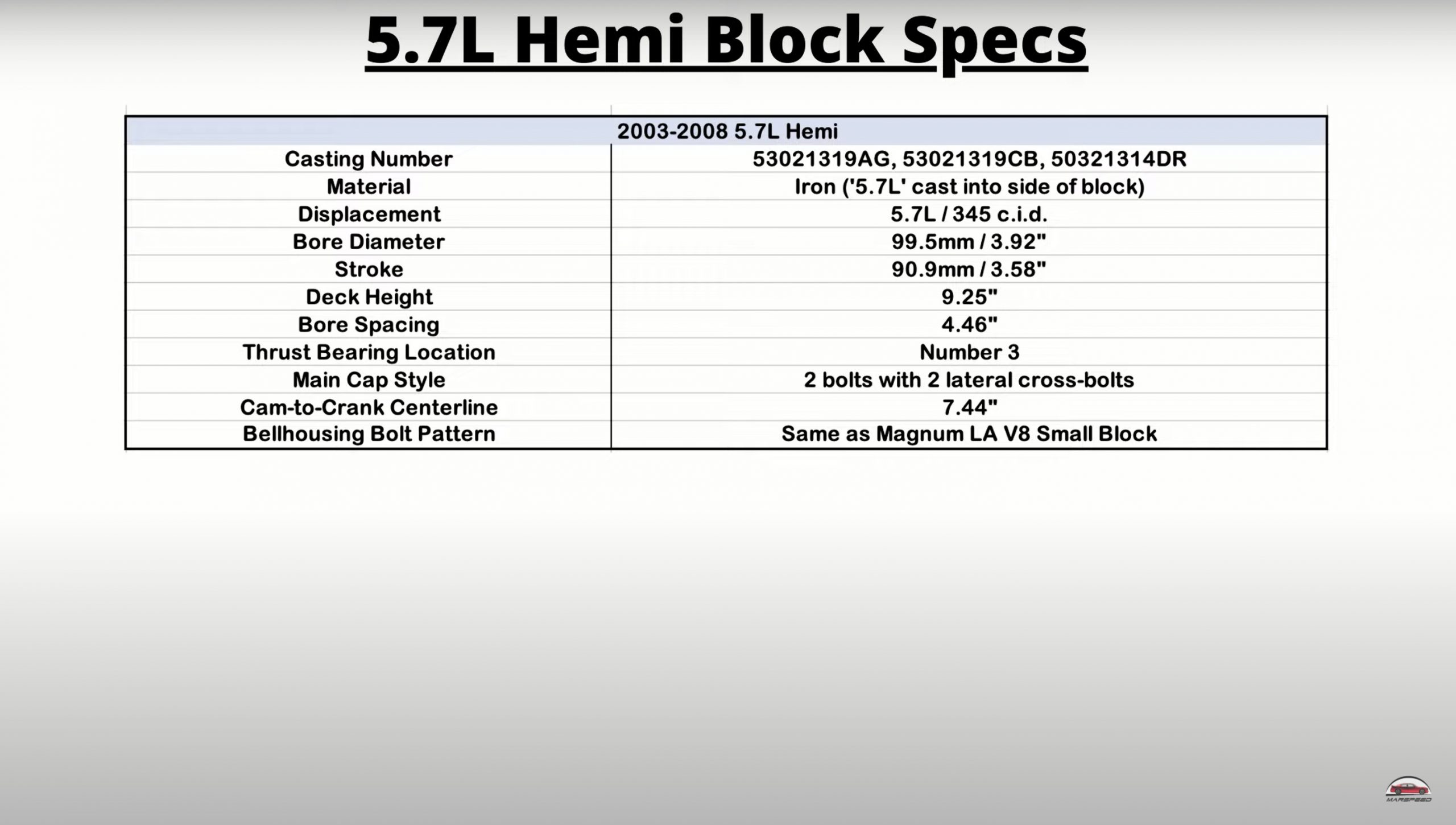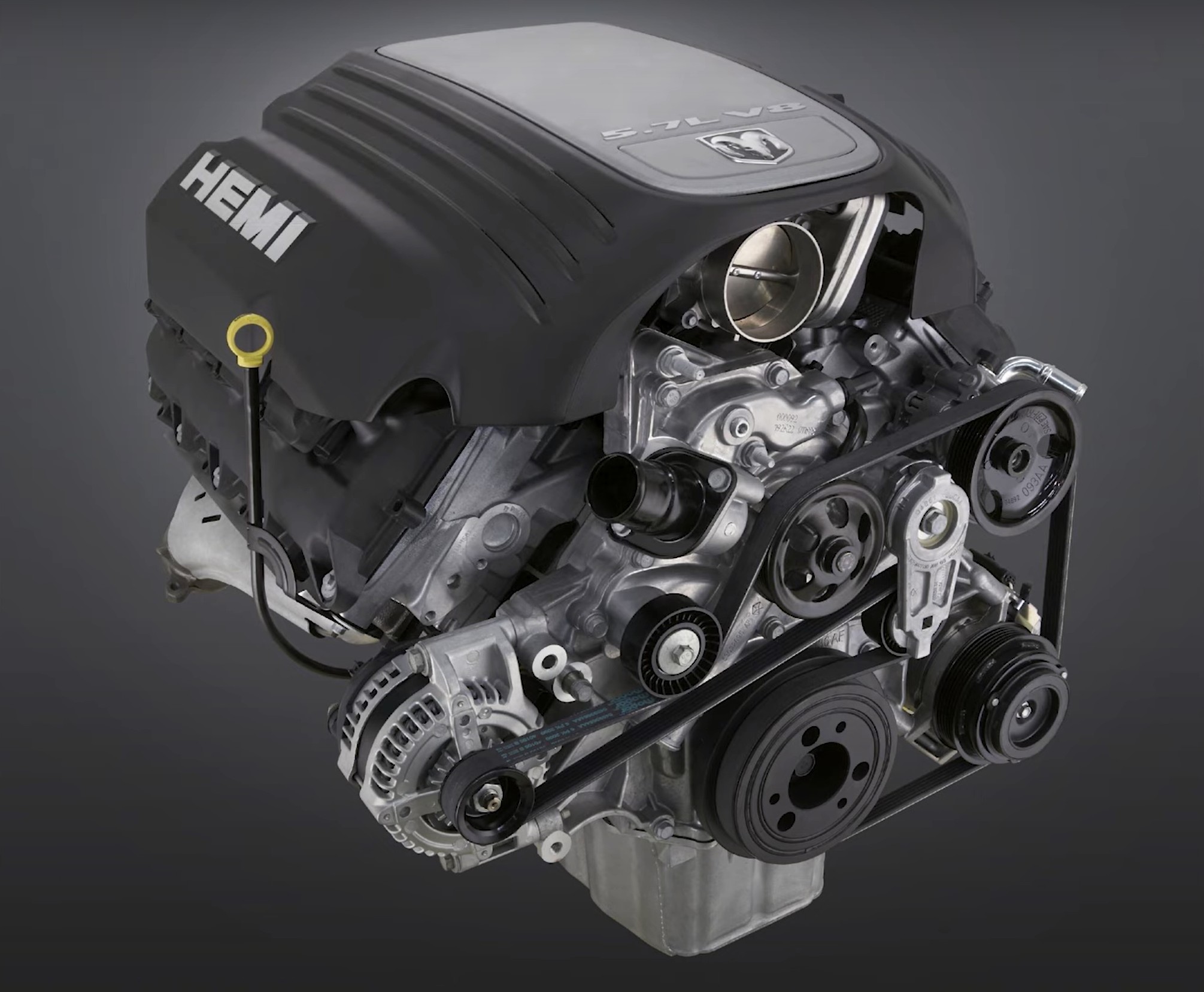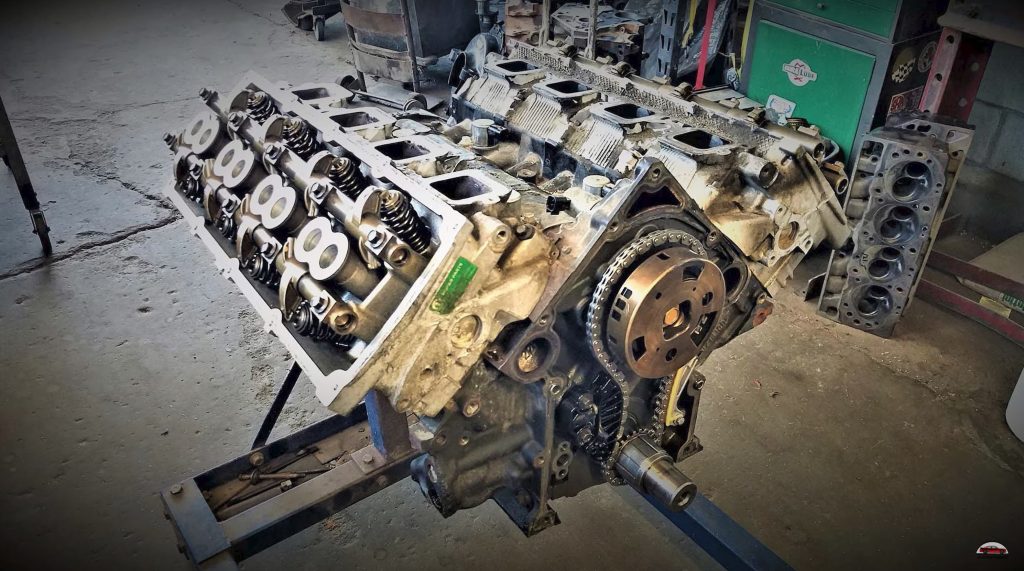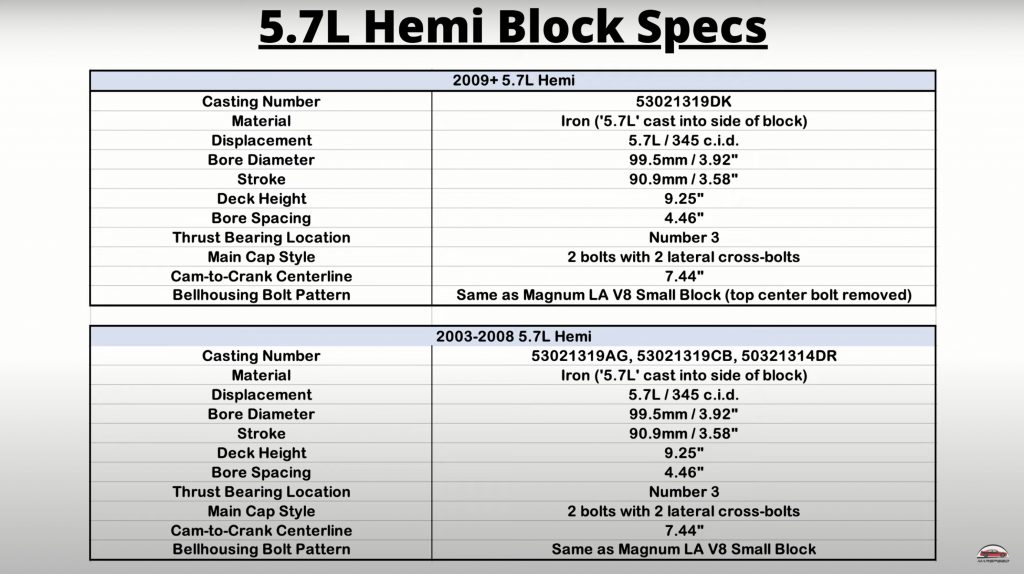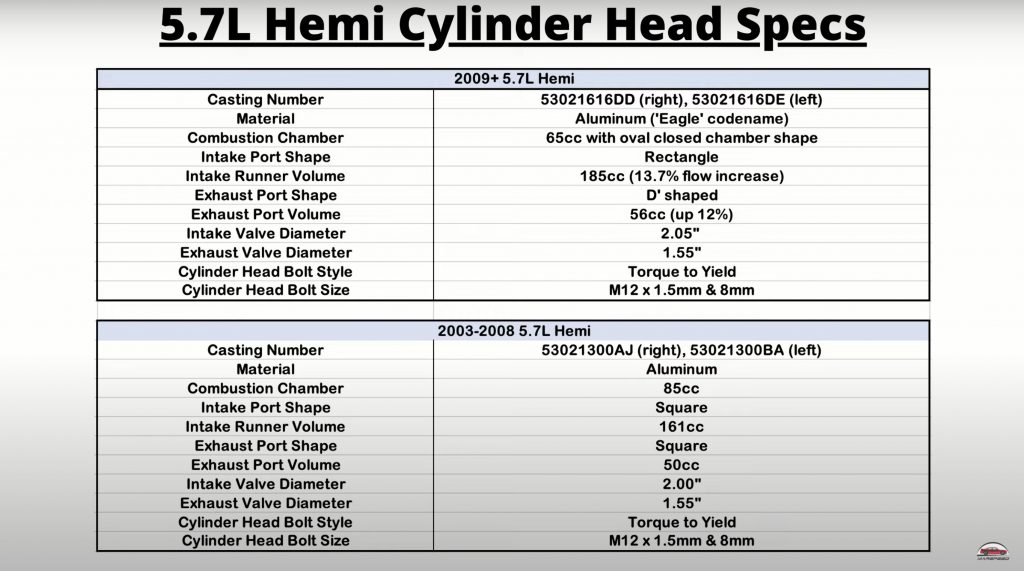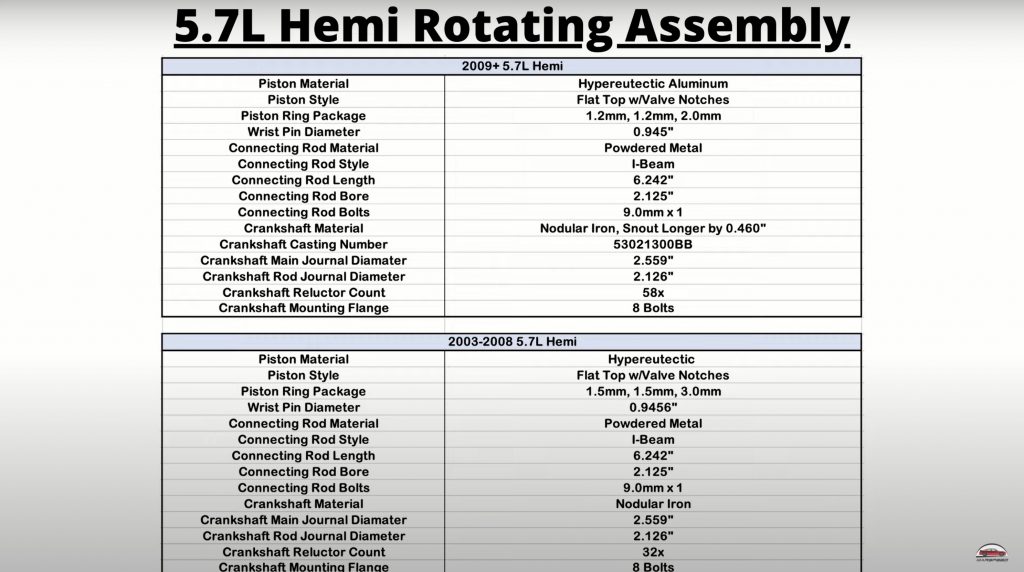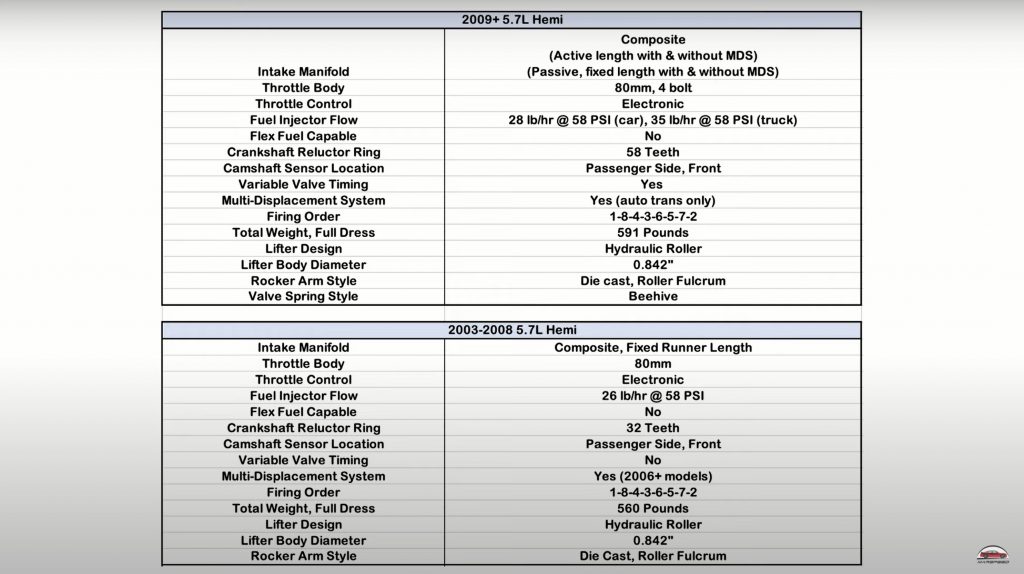As Chrysler’s 5.7L HEMI V8 is nearing two decades of powering production vehicles (you might’ve just used a machine powered by one), let’s take a bit of time to zoom in on this engine that powers vehicles ranging from muscle coupes to pickup trucks. We’ll mainly be discussing the differences between the original 2003-2008 incarnation of the V8 and the 2009+ Eagle update, as well as mentioning some of the most important issues owners can encounter.
Having entered showrooms back in the Daimler-Chrysler era via the 2003 Ram Pickup, the HEMI 5.7L unit continues to provide entry-level V8 muscle now that former Chrysler parent company FCA has merged with PSA to form Stellantis. And the 345 ci V8 doesn’t just provide continuity, as it’s also offered on all-new vehicles such as the 2022 Jeep Wagoneer.
5.7L HEMI 2003-2008 (Pre-Eagle)
The original design of the HEMI 5.7L saw the unit delivering between 330 and 350 horsepower, while the torque varied between 370 and 390 lb-ft, depending on the application—for instance, the Ram trucks got the milder spec for improved fuel efficiency and drivability, while muscle cars like the Chrysler 300C and multiple Dodges packed a bit more punch. However, this was only offered with automatic trannies.
These days, we’re talking about 48V mild-hybrid hardware being added to the HEMI 345 (think: RAM eTorque), but the engine came with fuel-saving features from the get-go. We’re referring to the MDS (Multi-Displacement System) that made its debut back in 2006, which can turn off four cylinders when the power and torque requirements are limited (e.g. light loads, highway cruising, etc.).
Speaking of which, these early engines were mated to either Mercedes or Chrysler 545RFE 5-peed automatics, while certain Ram Heavy Duty trucks worked with manual trannies, namely the 5-speed NV4500 or a Mercedes 6-speed G56.
5.7L HEMI 2009+ (Eagle)
The 2009 model year marked the introduction of the Eagle update, which delivered a plethora of improvements starting right with the block and the addition of VCT (Variable Cam Timing). The main upgrades involve the crankshaft, cylinder heads, combustion chamber, valve-spring, camshaft, and oiling system. Note that the Eagle, which weighs in at 591 lbs, is some 31 lbs meatier than its predecessor.
The output of Eagle HEMIs varies between 363 and 392 hp, while torque goes from 390 to 410 lb-ft for all-combustion applications.
It wasn’t until the 2015 model year that the current ZF 8-speed automatic replaced the 5-speed units. As for the manuals, six-speed units were only offered on certain Dodge Challengers and Ram Heavy Duty models. (these are also the vehicles that skip the MDS system).
Another addition was the active intake manifold offered on multiple models, whose short runner valve, which kicks in at 4,000 rpm, significantly improves the torque and power curves.
You can identify an Eagle based on its casting numbers and, more easily, by trying to spot the large round hole located on the front side of the block, north of the camshaft bearing journal.
The 5.7L HEMI is restomod friendly
These Gen III V8s were the first HEMIs since the 1971 departure of the iconic Gen II 426 (the modern motors no longer feature the hemispherical combustion chamber, but hey, Porsche makes a Taycan EV called Turbo).
Chrysler knew this would cater to the needs of enthusiasts, which is why all Gen III HEMIs feature the same bell housing bolt pattern as the Chrysler LA or Magnum small-blocks, while also being compatible with any Torqueflite automatic and many manual gearboxes.
5.7L HEMI V8 Common Issues and HEMI tick
The many differences between the Pre-Eagle and the Eagle 345 HEMI are listed in the video below, with the second part of the clip (7:33 timestamp) delivering multiple charts that easily allow one to compare the specs.
No engine is without flaws and the HEMI 345 has had its fair share of issues. Some of these are lighter (e.g. the exhaust manifold bolt failure), while others, such as the roller issue, can cause serious trouble, while also being difficult to diagnose at times due to confusing symptoms (you might’ve heard of the dreaded HEMI tick).
And the main points related to this dark side of the 5.7L HEMI are discussed in the final part of the clip (12:33).
However, if you wish to zoom in on this matter, make sure to check out the second and the third clip below. Coming from the same YouTube label, these cover the critical issues of the said engines, namely the valve seat drop of the Pre-Eagle and the lifter/camshaft failure of the Eagle, respectively. These clips also include methods of preventing the said problems, as well as Chrysler‘s take on the matter.
Even with the flaws mentioned above, the HEMI 5.7L is generally regarded as a reliable proposition, in addition to providing some proper muscle.
As with any engine, proper maintenance is the key to making the most out of this resourceful motor, which can take you past 200,000 miles when properly cared for.
